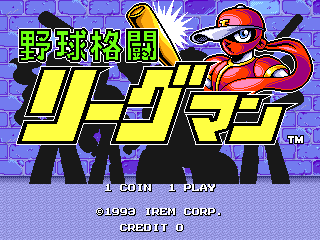Yakyuu Kakutou League-Man (Japan, set 2)
Game Information
| manufacturer | Irem |
| year | 1993 |
| clone of | nbbatman |
| other clones | leaguemn leaguemna nbbatman2bl nbbatmanu |
| genre | N/A |
| downloads | 196 |
Screenshots










Download Details
| split set | leaguemna.zip 2.05m |
| parent set | nbbatman.zip 3.38m ↗ |
| standalone set | leaguemna.7z 2.58m |
Driver Details
| source | irem/m92.cpp |
| status | good |
| emulation | good |
| cocktail | preliminary |
| savestate | supported |
Screen Details
| display | screen |
| type | raster |
| orientation | horizontal |
| width | 320px |
| height | 240px |
| refresh | 60.01mhz |
Input Details
| player | 1 |
| type | joy |
| buttons | 2 |
| directions | 8 |
| player | 2 |
| type | joy |
| buttons | 2 |
| directions | 8 |
| player | 3 |
| type | joy |
| buttons | 2 |
| directions | 8 |
| player | 4 |
| type | joy |
| buttons | 2 |
| directions | 8 |
Chipset Details
| name | NEC V33 |
| clock | 8.58mhz |
| name | NEC V35 |
| clock | 13.65mhz |
| name | Speaker |
| clock | N/A |
| name | YM2151 OPM |
| clock | 3.41mhz |
| name | Irem GA20 |
| clock | 3.41mhz |
ROM Details
| name | size | crc |
|---|---|---|
| a1_-h0-.ic9 | 256.00k | 47c54204 |
| a1_-l0-.ic11 | 256.00k | 1d062c82 |
| a1_-h1-.ic8 | 256.00k | 3ce2aab5 |
| a1_-l1-.ic10 | 256.00k | 116d9bcc |
| a1_-sh0-a.ic4 | 64.00k | c4aef83a |
| a1_-sl0-a.ic2 | 64.00k | e9ecbed2 |
| a1_-c0-.ic59 | 512.00k | 314a0c6d |
| a1_-c1-.ic58 | 512.00k | dc31675b |
| a1_-c2-.ic47 | 512.00k | e15d8bfb |
| a1_-c3-.ic48 | 512.00k | 888d71a3 |
| a1_-000-w.ic54 | 512.00k | 437d3c0d |
| a1_-001-w.ic43 | 512.00k | c2ecd508 |
| a1_-010-w.ic31 | 512.00k | d4184ccc |
| a1_-011-w.ic19 | 512.00k | 7752fc95 |
| a1_-020-w.ic56 | 512.00k | 3008822e |
| a1_-021-w.ic45 | 512.00k | 04272660 |
| a1_-030-w.ic33 | 512.00k | 0d5e744c |
| a1_-031-w.ic21 | 512.00k | 4aa9994e |
| a1_-da-.ic53 | 512.00k | 735e6380 |
| m92_a-3m-.ic11 | 279.00b | fc718efe |
| m92_a-7j-.ic41 | 279.00b | 5730b25a |
| m92_a-9j-.ic51 | 279.00b | 92d477cf |
| m92_z-2k-.ic15 | 279.00b | 0646be21 |
| m92_z-2l-.ic16 | 279.00b | a09df0ee |
| m92_z-2f-.ic64 | 279.00b | nodump |